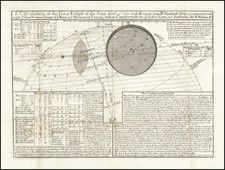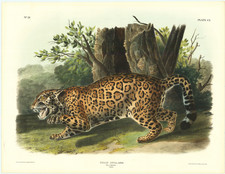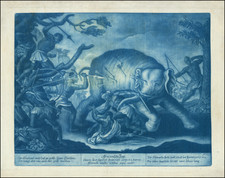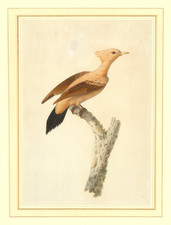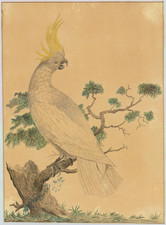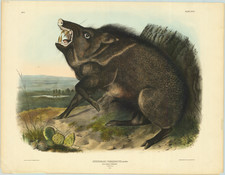Freemont's Squirrel and Sooty Squirrel, rendered by John Woodhouse Audubon and lithographed by J. T. Bowen in Philadelphia in 1848, captures two distinct squirrel species with a detailed representation of their natural habitat. Centered on an oak tree, Fremont's Squirrel and the Sooty Squirrel are depicted with wonderful accuracy, underscoring the naturalism that was a hallmark of Audubon's oeuvre.
The mid-19th century was a time of profound curiosity about the natural world. As explorers charted new territories and brought back tales and specimens from previously unknown lands, there was a burgeoning interest in documenting and understanding biodiversity. This was a period marked by a scientific and aesthetic reverence for nature, embodied in the meticulously detailed works of artists and naturalists like the Audubons.
John Woodhouse Audubon, following in the footsteps of his renowned father, John James Audubon, was among the prominent figures in this movement. His artwork is a testament to the intricate interplay between scientific observation and artistic representation. In this particular lithograph, the oak tree serves not merely as a backdrop but as an integral component, highlighting the ecological relationship between the squirrels and their habitat.
J. T. Bowen's contribution as the lithographer, printer, and colorist is equally significant. The process of lithography, a relatively recent innovation of the time, allowed for the mass reproduction of images with an unparalleled fidelity to the original. This plate exemplifies the delicate and nuanced shading and coloring that was possible with the technique, further elevating the image's lifelike quality.
In this visual chronicle, the two squirrels, each representing their species, stand not just as isolated subjects but as symbols of the era's passion for natural discovery and documentation. Their presence on the oak tree, rendered with such precision and care, evokes a vivid window into the natural world of the mid-1800s, a world that was rapidly being mapped, categorized, and celebrated.
The Viviparous Quadrupeds of North America: Imperial Folio Edition
John James Audubon, best known for his groundbreaking work The Birds of America, embarked on another ambitious project in the later years of his life: documenting the mammals of North America. This endeavor culminated in the creation of Viviparous Quadrupeds of North America, a substantial and influential work that delved into the diverse world of North American mammals with the same depth and artistry that had made his bird illustrations legendary.
John Woodhouse Audubon, born in 1812 in Henderson, Kentucky, was the second son of the renowned ornithologist and artist, John James Audubon. Despite often existing in the shadow of his eminent father, John Woodhouse carved out his own niche in the field of natural history illustration and was a significant contributor to the scientific explorations and recordings of 19th-century America.
Early Life and Education
John Woodhouse grew up immersed in the world of ornithology, naturalism, and art, given his father's groundbreaking work on The Birds of America. This upbringing, filled with travels and fieldwork, equipped him with the skills and passion to follow in his father's footsteps. As a boy, he accompanied his father on many expeditions, serving both as an assistant and absorbing the intricacies of nature study.
Professional Journey
By the 1830s, John Woodhouse began to play a pivotal role in his father's work. Notably, he contributed several illustrations to his father's monumental Birds of America. Recognizing his son's talent, John James Audubon sent John Woodhouse to Europe to receive formal training in the arts, fortifying his natural skills with the techniques of the time.
Upon his return, John Woodhouse took on an even more significant role in his father's endeavors. His contribution became especially vital during the creation of the octavo edition of Birds of America, where he assisted not just in producing illustrations but also in managing the logistics of the ambitious project.
Following the success of Birds of America, the Audubons set their sights on a new project, "The Viviparous Quadrupeds of North America". It was during this project that John Woodhouse's contributions became even more pronounced. With his father's health declining, he took on the responsibility of traveling the American frontier, sketching and observing the mammals of North America. His illustrations, particularly of mammals like the Silver Fox, highlighted his keen observation skills and his meticulous attention to detail.
Later Life and Legacy
After the passing of John James Audubon in 1851, John Woodhouse continued to promote and sell his father's works, ensuring their legacy in American natural history. However, the financial strains of the projects and the costs of maintaining the family estate, Minnie's Land, weighed heavily on him.
John Woodhouse Audubon passed away in 1862, but his contributions to American naturalism, particularly his work on The Viviparous Quadrupeds of North America, remain an invaluable testament to the scientific and artistic explorations of the 19th century. He may have begun his career in the shadow of his illustrious father, but through dedication and talent, he left a legacy in his own right.









